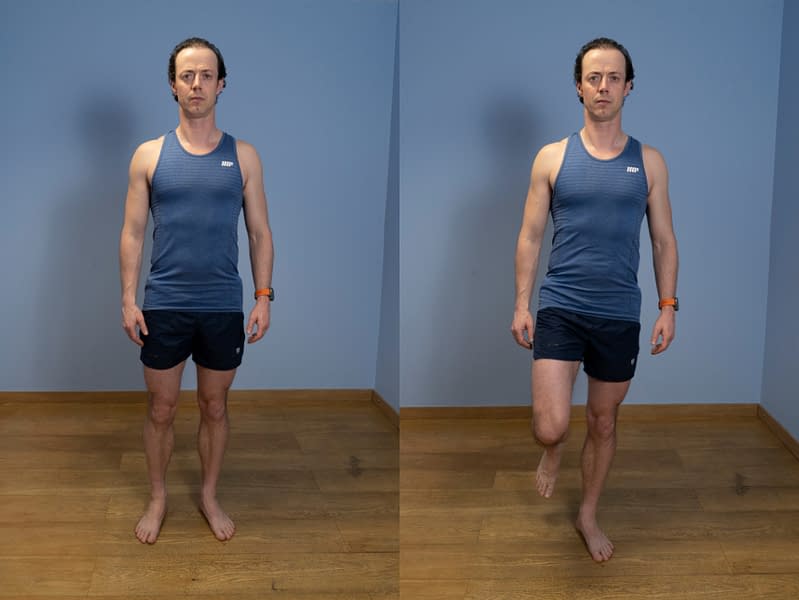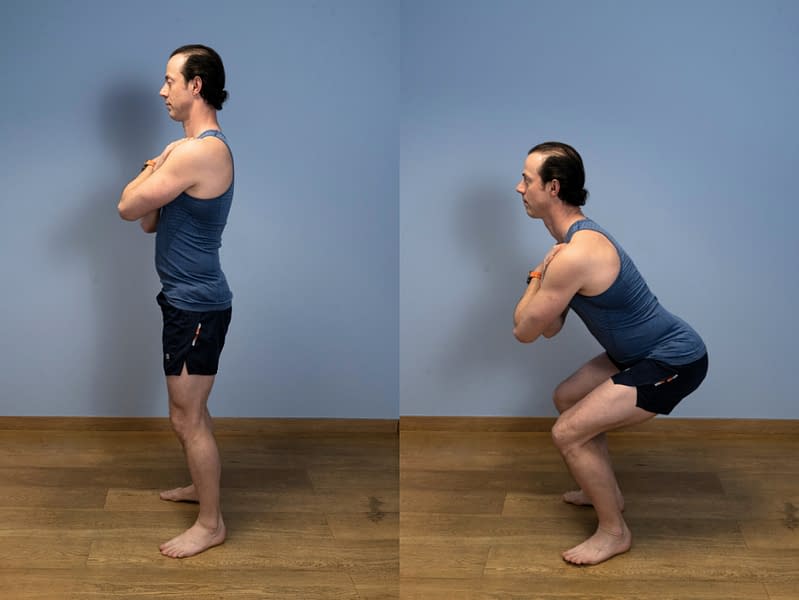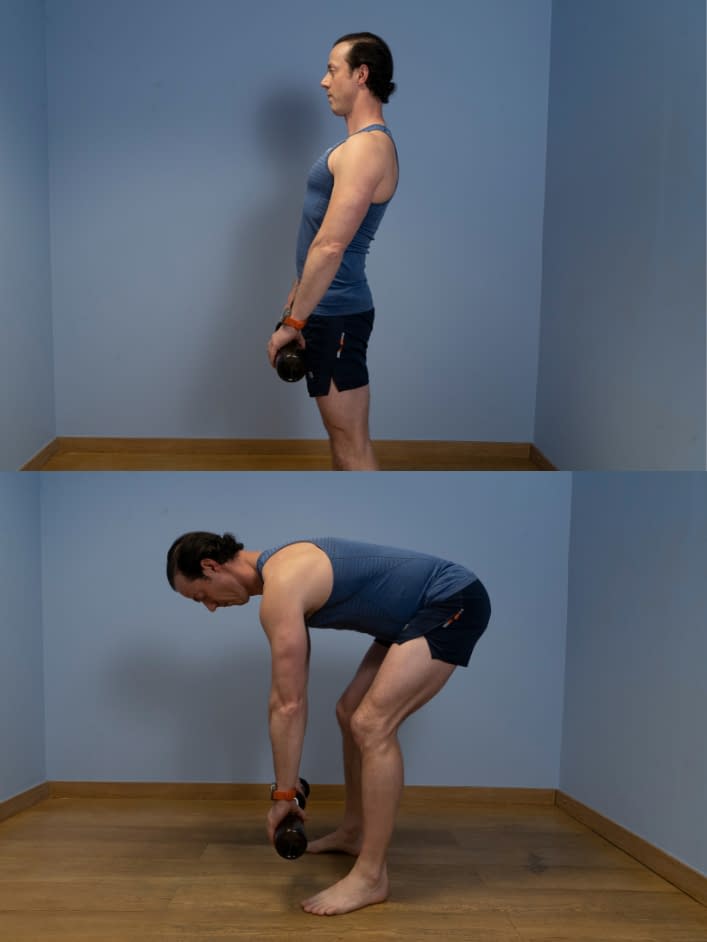Knee Replacement Surgery Advanced Exercise Programme
Aim to perform this programme a minimum of once per day unless prescribed otherwise. As with any new exercise, start slowly (repetitions as able) and build up as you are able within the guidelines below.
Pain should not exceed 4/10 whilst completing this exercise programme.
1. Single leg balance - knee bent
- Perform this exercise barefoot or in socks, in a clear space near a wall/stable object and on a flat, non-slip surface.
- Shift your weight on to the affected leg then lift the supporting leg slightly off the floor – maintain a slight bend in the standing knee.
- Look down at the knee and focus on balancing whilst keeping the knee in line with the hip and ankle – use the object/wall to prevent yourself falling.
- Aim to hold your balance for up to 1 minute or until reaches 4/10 on your pain scale.
- To progress, try looking straight ahead rather than down at the knee. To advance further, this can be performed with the eyes closed.
2. Bodyweight squats
- Stand with your feet hip width apart and your arms across your chest.
- Sit back as if you are sitting into a chair.
- At the same time your head should move forwards to keep your balance.
- As you do this aim to keep your back straight.
- Go down as far as you feel comfortable or until your thighs are parallel with the floor.
- Come back up to standing and repeat.
3. Deadlift
- Stand upright with feet hip-width apart, a slight knee bend and a weight held in both hands.
- Engage the abdominal region and in a controlled manner, bend forward at the hips trying to keep your back straight. Do not let your knees bend further. Let your hips press out backwards.
- Go down as far as you feel comfortable or until your back starts to round.
- Come back up to standing and repeat.
We recommend consulting a musculoskeletal physiotherapist to ensure exercises are best suited to your recovery. If you are carrying out an exercise regime without consulting a healthcare professional, you do so at your own risk. If you have any concerns whilst completing these exercises, please contact a healthcare professional.
More Plans
The early plan is designed to provide you with some exercises to help increase movement and begin the process of getting the thigh muscles to re-engage. Pain should not exceed 3/10 on your self-perceived pain scale whilst completing this exercise programme.
- 0
- 1
- 2
- 3
- 4
- 5
- 6
- 7
- 8
- 910
Here our focus becomes regaining strength in the hips and legs. It is expected that you would be carrying on some of the movement-based exercises from the early programme and add in these exercises. Pain should not exceed 4/10 on your self-perceived pain scale whilst completing this exercise programme.
- 0
- 1
- 2
- 3
- 4
- 5
- 6
- 7
- 8
- 910


